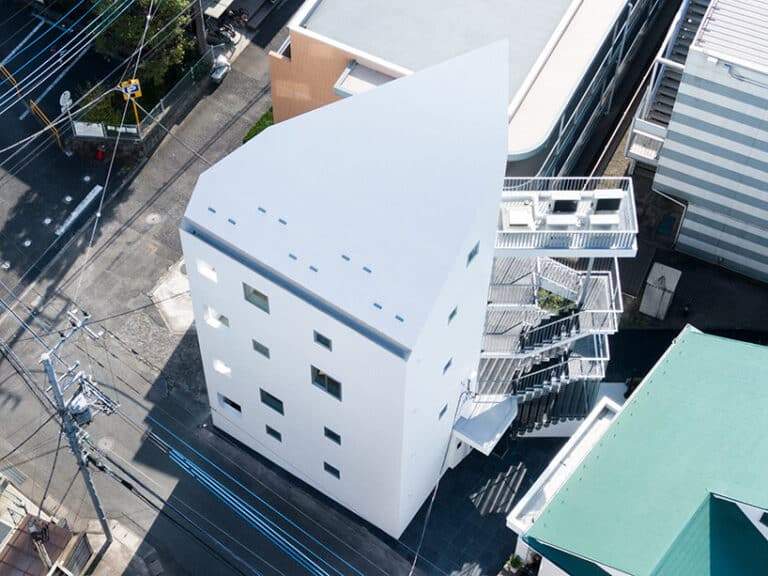Brutalist Architecture: How It Shaped Our Cities Differently
Emerging in the mid-20th century, Brutalist architecture appeared as a bold architectural movement aiming to provide functional and direct designs using raw materials such as concrete. Despite its initially rigid appearance, this school played a significant role in shaping the features of many cities around the world, particularly in governmental, educational, and housing projects.
In this article, we will review the main stages of the emergence of Brutalist architecture, identify its basic elements, explore some famous examples that reflect the nature of this architectural style, and discuss its urban impact. We will conclude with an analytical opinion highlighting both the strengths and challenges of this approach.

The Emergence of Brutalist Architecture: Historical Background
Brutalist architecture emerged in the post-World War II era, specifically in the 1950s, as part of widespread reconstruction efforts that required quick and practical building solutions for damaged cities. There was an urgent need to design strong, durable, and cost-effective buildings—exactly what this architectural school offered.
It took its name from the French term “béton brut” , meaning “raw concrete”, which is the primary material used in Brutalist structures. Aesthetics were not the main goal; instead, the focus was on functionality and structural clarity.
Elements of Brutalist Architecture: How to Recognize It
Brutalist architecture can be identified through several common characteristics found in most of its buildings:
| Element | Description |
|---|---|
| Use of Concrete | Concrete is used visibly and often left exposed, giving the building a rough, solid appearance. |
| Simple Geometric Design | Cubic or rectangular shapes dominate, with clear geometry and minimal decoration. |
| Exposed Structural Elements | Beams, columns, and floor slabs are often visible from the exterior. |
| Functionality | The design prioritizes utility over ornamentation, with spaces planned to meet clear needs. |
| Lack of Symmetry | The layout does not follow traditional symmetry but focuses on logical arrangement of components. |

Notable Examples of Brutalist Architecture Around the World
| Name | Location | Project Type |
|---|---|---|
| Barbican Estate | London, United Kingdom | Residential and Cultural Complex |
| Leicester University Engineering Building | Leicester, United Kingdom | Educational Building |
| Palácio do Congresso Nacional | Brasília, Brazil | Government Building |
| Indiana University Library | United States | Educational Building |
These examples reflect the global spread of this architectural style, especially in large-scale public projects requiring durability and functionality.
Impact of Brutalist Architecture on Urban Environments
Brutalist architecture played a major role in reshaping cities after World War II. It helped build large housing developments, educational facilities, and government buildings at relatively low costs and in short timeframes.
However, over time, these buildings became the subject of debate. Some view them as symbols of strength and simplicity, while others argue they lack beauty and make residents feel cold or disconnected.
Despite the criticism, Brutalist architecture remains influential in urban planning, particularly in densely populated areas where cities require large, functional spaces.

ArchUp Opinion: Analysis and Discussion
From an analytical perspective, Brutalist architecture was very well-suited to the post-war context, where priorities revolved around function and cost rather than aesthetics. However, as social and cultural needs evolved, this style began facing public acceptance challenges.
One of its greatest advantages is durability—many of these buildings have stood firm until today despite criticism. On the downside, some designs did not take into account human aspects, such as creating comfortable spaces for social interaction or focusing on user experience.
Summary Table of Key Points
| Aspect | Summary |
|---|---|
| Origin | Emerged in the 1950s as a practical response to post-war construction needs. |
| Materials | Relies heavily on raw concrete as the main building material. |
| Design | Emphasizes simplicity, functionality, and clear geometric forms. |
| Urban Impact | Played a key role in rebuilding cities, though it has faced criticism in recent decades. |
| Future Outlook | Some buildings are being renovated, while others are neglected or demolished. |

Frequently Asked Questions About Brutalist Architecture
Q: Why is it called Brutalist architecture?
A: The name comes from the French phrase “béton brut” , meaning “raw concrete”, which is the primary material used in this style.
Q: Is Brutalist architecture still used today?
A: It is not used to the same extent as before, but there are ongoing efforts to renovate existing Brutalist buildings and integrate them into modern urban plans.
Q: Why do some people criticize this type of architecture?
A: Due to its cold and rigid appearance, and its lack of traditional aesthetic appeal, some people feel uncomfortable interacting with Brutalist buildings.
Q: Which countries made the most use of Brutalist architecture?
A: The United Kingdom, France, the former Soviet Union, and Brazil were among the earliest adopters of this style in their public projects.







